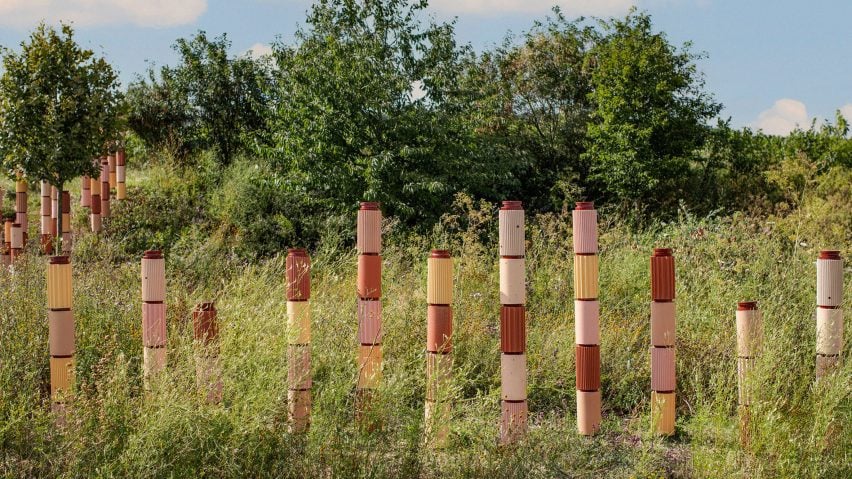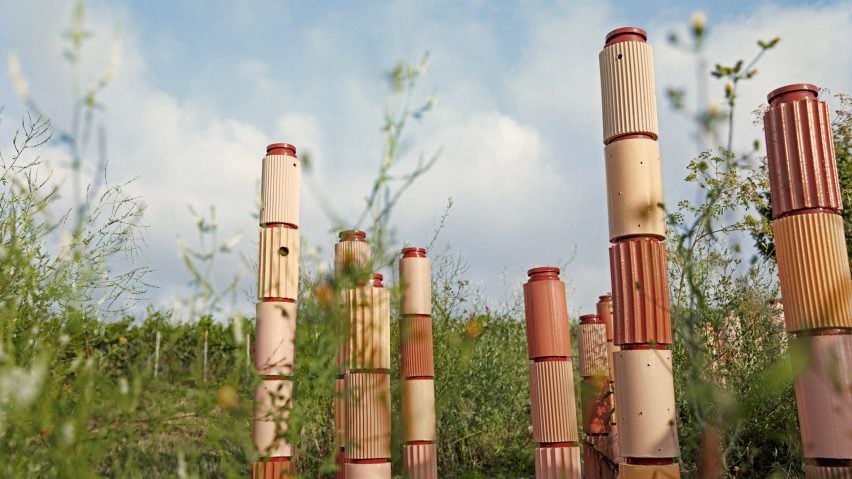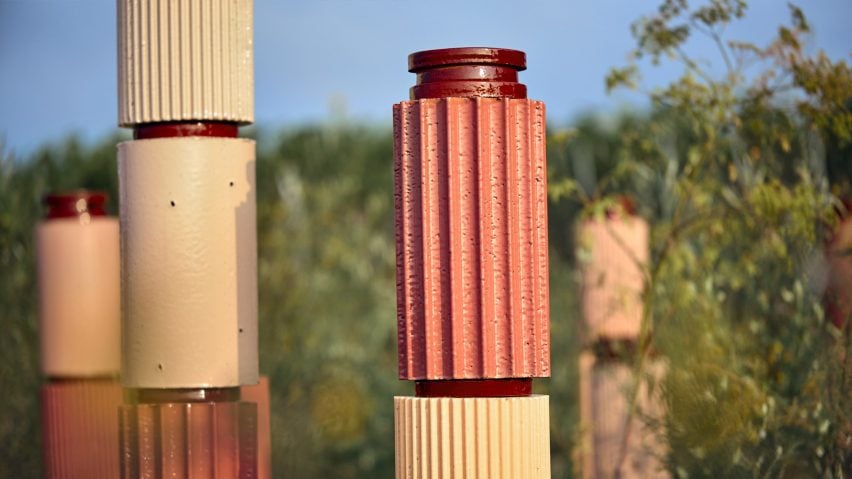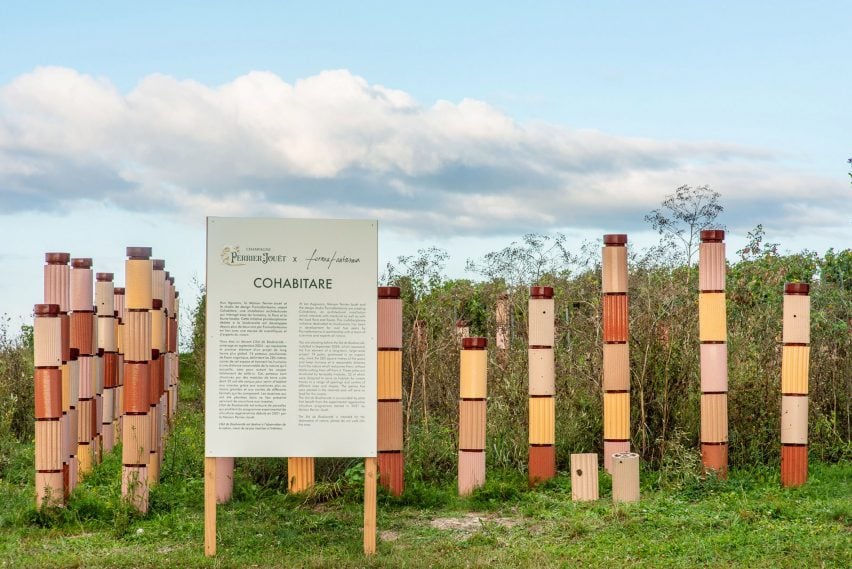
Formafantasma nestles biodiverse installation in Champagne vineyard for Perrier-Jouët
Design studio Formafantasma has created a series of hollow terracotta pillars to house birds and insects, which surround a biodiverse garden in a vineyard for French champagne house Perrier-Jouët.
Located in Champagne, France, Biodiversity Island comprises cylindrical modules stacked into 74 pillars of varying heights around a 285-square-metre overgrown patch of land.
Positioned across from Perrier-Jouët's vineyard, the installation was the result of a collaboration between the champagne house and Formafantasma, who wanted to increase biodiversity in the area.

"The Biodiversity Island is a plot of land where we introduced specific kinds of vegetation to help the insects and the animals living in the area that inevitably struggle because everything is cultivated," Formafantasma co-founder Simone Farresin told Dezeen.
"[It is] a little hub for insects to thrive, and also a place where scientists are monitoring what is happening in the regenerative fields that are cultivated here."
From the start of the collaboration, Formafantasma set out to design a project that went beyond aesthetic considerations and aimed to create something beneficial to the natural landscape.

Of the 74 ceramic pillars, 32 have holes on the exterior, leading to hollow insides. The pillars' interiors vary in design to attract different wildlife such as birds, insects and bats.
"In our contemporary time, the relationship we have with the environment should not just be of admiration from an aesthetic point of view but should also understand how it operates," said Farresin.
"It's the responsibility of design to be entering a conversation that is not just based on aesthetics."
"Our idea here is to use design to create an intervention that helps people understand what is difficult to understand when you look into a field," he continued. "Design can be a form of conversation with others and a translation of complex ideas into something that is more graspable."
Some cylinder modules were punctured with small holes and filled with soil, some were given larger entry holes and twigs inside, and others – designed specifically for wasps – featured hollowed insides divided into sections.
The pillars also act as a fence to discourage people from entering the Biodiversity Island.

To best serve the flora and fauna in the area, Formafantasma planned for a limited number of modules to be habitable.
"It's not very different between humans and animals – we don't like to live in crowded cities," explained Farresin. "The idea is that only 32 of the modules have holes and cavities because otherwise, too many insects interact with one another."
"The quantity of insects colonising the area should be controlled, of course, so they don't become too much that they harm the field," added Andrea Trimarchi, who co-founded Formafantasma with Farresin.

Light shades of pink, orange and yellow were used on the cylinders. Some featured textured surfaces of different-sized ridges and grooves.
The internal surfaces of the hollow modules were left unfinished and the exteriors were glazed.
"Colours are very light so they do not attract too much sun – the environment within the extrusion should be quite cold and chill to protect the animals inhabiting the space," said Trimarchi.
Biodiversity Island forms part of a wider collaboration project between Formafantasma and Perrier-Jouët called Cohabitare, which will also involve renovating an abandoned building on the vineyard.
Other projects recently completed by Formafantasma include a reading space cloaked in pink curtains at this year's Stockholm Design Week and a furniture collection designed as a critique of the "gendered nature" of modernism.
The photography is courtesy of Perrier-Jouët.